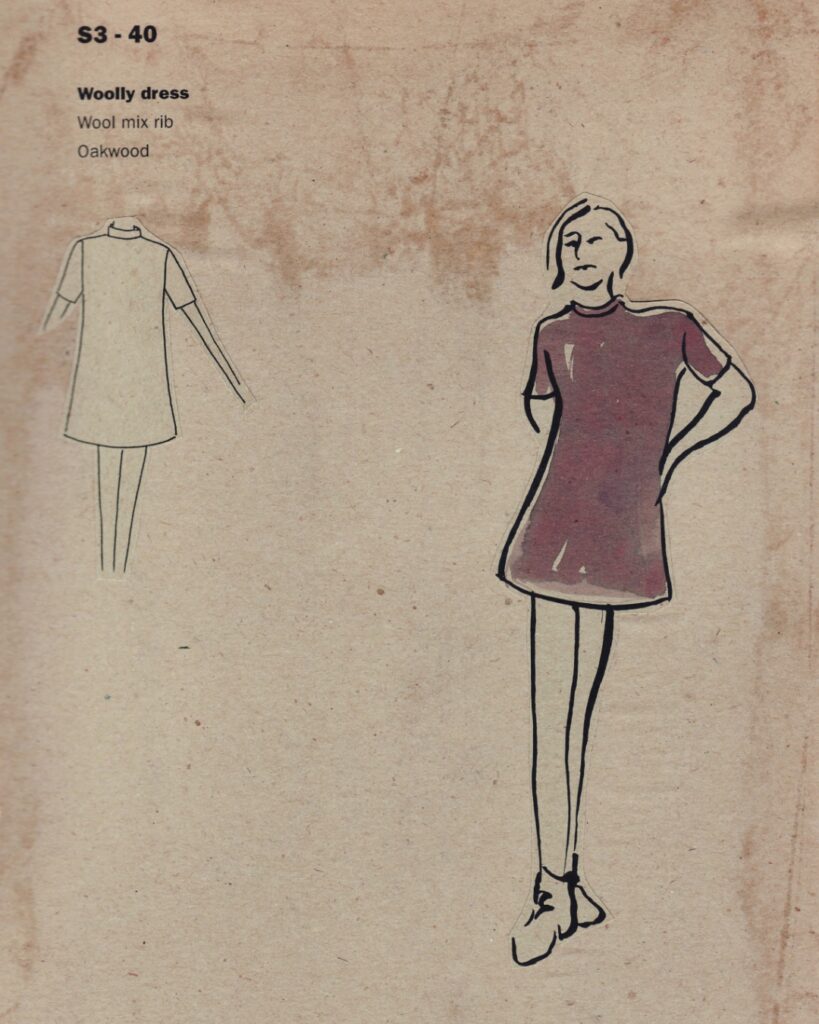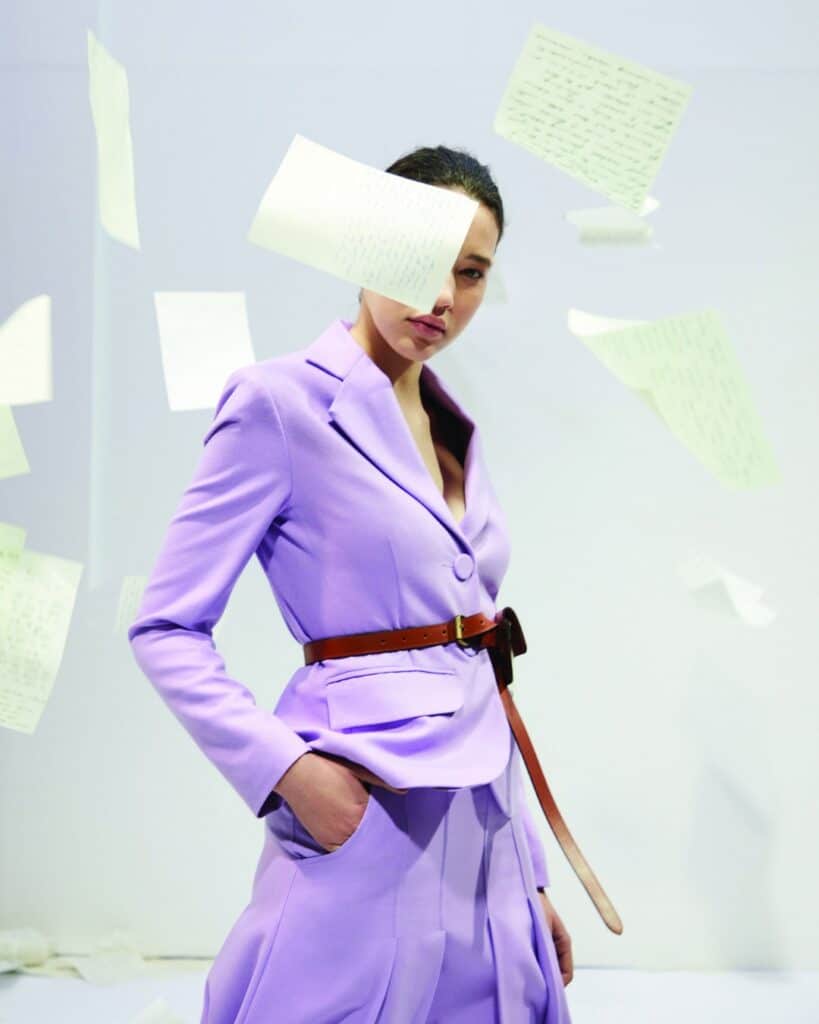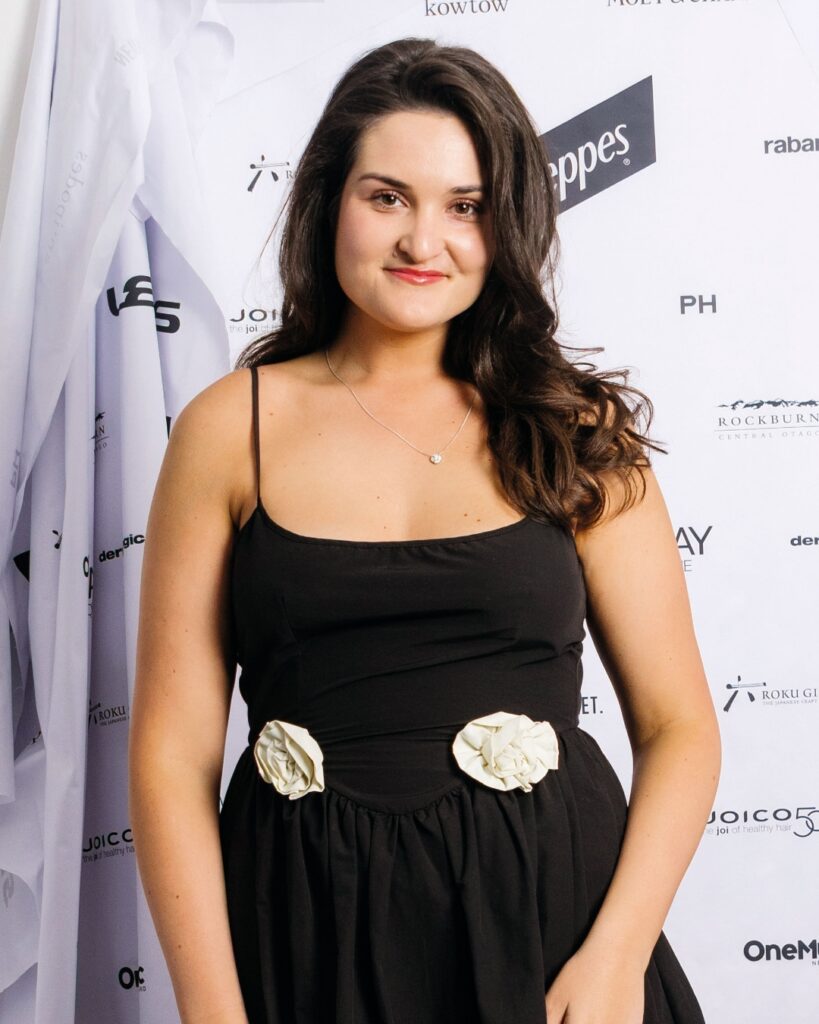
Sending flying china into the lap of Cate Blanchett is one of the many highlights of Kate Sylvester’s career. Not typical fashion week decorum — but in true style — doing things differently, with an edge has been key to the longevity of her eponymous label.
It was Australian Fashion Week, the show ‘Brighton Rock’, the year 1999. As a young journalist I sat front row while the crowd murmured with intrigue at the table height runway laid with fine bone china cups and sauces. Inspired by Graham Greene’s novel about youthful rebellion, models walked and kicked the teacups out into Sydney’s fashion A-listers. The show oozed with a clever mix of intellect and cool. It brilliantly captured the essence of Kate Sylvester the woman, and put her brand on the radar of international buyers from around the globe.
Today she is one of the most iconic names in New Zealand fashion, yet, earlier this year she sent shock waves through the industry when she announced she was going to walk away from it all.
“I have this vision of Wayne and I in the car, leaving the city, with the Canned Heat song Going Up the Country on full blast,” Sylvester laughs with a wide grin, as she shares her anticipation of a newfound freedom. “Due to the nature of fashion, I’ve been creating collections for every season for over 30 years, managed manufacturing and distribution deadlines… My life has been incredibly tied to strict timetables, relentless schedules. To have my days, weeks, months completely open — it’s exciting.”
We’re having lunch at the effortlessly stylish Westmere home she shares with her partner in life and business, Wayne Conway. We’re sitting in a clever extension he’s designed. There’s art on the walls, an old piano in one corner, a tapestry cushion, which inspired her 1999 ‘Arts and Crafts’ collection, is squished on the bench seat and Kate is sitting on one of her hand-crocheted blankets.
Large windows look out on the garden she designed in honour of her late mother and father, great gardeners, whose love for each other inspired her incredibly moving ‘Love Letters’ collection in 2019 where she reprinted the letters they wrote to each other at the start of their relationship in the 1950s. Valuing the importance of creativity and self-expression above anything ‘as tedious as housework’ are other traits her parents installed in Sylvester, along with the importance of family — which remains, perhaps, the strongest thread of all in this story.


The couple, who had originally met at Wellington Polytech where Sylvester was studying fashion and textiles and Conway graphic design, travelled home via India, before settling in Kitchener Street in Auckland’s inner city where they set up a creative studio and lived — illegally — out the back. An alternative scene was growing around them, before the developers moved in. There was a dance studio upstairs, filmmaker Kerry Brown was a neighbour, Standard Issue had a store, people drank coffee and smoked cigarettes at the Black Crow café…
The shy pair, with their understated sense of cool and incredible creativity, set about making their shared vision a reality. Sylvester drawing on her insatiable appetite for books, music, film, art… While Conway, inspired by Bauhaus, wanted to build on the concept of family — of fonts, ideas, projects, people. Their original label, Sister, came from this. “There was a real energy,” he says. “We were young and not even aware of the recession. We just wanted to do our thing.”
Not dissimilar, perhaps, to what is happening in pockets around the country now, as young designers find new ways to connect. It’s no surprise to find Sylvester and Conway recently rubbing shoulders with the breakout creatives at K’Road’s midwinter fashion showcase, Te Wiki Āhua O Aotearoa, celebrating a new wave of up-and-coming designers, models, and artists.
“It’s exactly the kind of thing we were doing in the very early years,” says Sylvester, of the series of runway shows held in empty spaces and underground clubs. “It was absolutely fantastic. The creativity and energy amazing. They must keep going, to fight for it. We started from nothing and built it up. People say it’s harder now and, yes, there are elements that are more challenging, but there are other aspects that were much harder back then. When we started out, there was no concept at all of New Zealand designers, really. There was Zambesi who were absolute pioneers. Young designers need to stick at it and be prepared to work their asses off — like we did.
“The biggest thing we have learned and what ultimately is the key to our success, is that bad shit happens. Horrible things always happen, but it’s finding a way to take it and make it into something positive. We had many setbacks, stuff that was hard… The first example is right at the very beginning when I made a series of tops and people couldn’t fit them over their heads, right through to having to pivot away from international sales. Ultimately, however, it made us a strong business and wiser people.”
Of their partnership, Sylvester says she and Conway have always worked incredibly well together.
“It’s empowering to have somebody to bounce ideas off and to get excited about the same things. Like when we were in the archives at Te Papa, looking at pieces the artist Frances Hodgkins had painted for print designs. And we just looked at each other and both thought, ‘imagine if we could’ and the whole collection grew from that moment.
“I really felt like Frances was my friend, when I was designing that collection. I felt very connected to her. The more research I did the more I realised how brave she was; a pioneering woman in Edwardian New Zealand who chose not to get married but to travel and pursue her art. She was completely eccentric. I definitely would have had fun hanging out with her,” Sylvester laughs. “Lee Miller is another woman I would love to have been friends with. As a photographer she covered WWII for Vogue — she was incredibly brave and you could tell that she really enjoyed a good laugh.”


For Sylvester herself, being brave is imperative in life. As is making dreams reality. The blank canvas that lies ahead is full of possibility: intrepid travel to Peru, exploring the culture of Spain, diving deep into Moorish culture, and travelling across Morocco. There’s the desire to learn to weave, study art history, design the back garden…
“Ultimately, I am a maker, my creativity involves being hands-on, that’s what I love. As a designer I ended up directing a team, so I can’t wait to see how getting back to the basics of working with materials, whatever shape or form that may be, where it will lead me.
“Right now, I am absolutely loving that I don’t have to take something that stimulates me creatively and then turn it into a collection — even though that is the part that I love the most about being a fashion designer. When I started doing tapestry it evolved into the ‘Arts and Crafts’ collection of Summer 1999. When we travelled to Egypt, swam in the Nile, visited Petra in Jordan in 2023, it became ‘Into the Desert’ for our Spring/Summer ’24 collection… As a designer, there is always the question: how do I turn this into a collection?
“Instead, I am rereading old books that I love, I’m knitting dish cloths because, well, they’re so basic and simple. Right now it’s about taking a breathing space creatively.”
Staying true to what is important has always been at the heart of every decision this couple has made. When America came knocking after that ‘Brighton Rock’ show, and department store giants Barneys and Henri Bendel were fighting to exclusively stock the label, Sylvester, already feeling the pressures of travelling and leaving her three young sons at home, made the decision — a big decision business-wise — to put family and home first and focus on the local market.
And this has always been the way. The result is a family that is strong and united. Twins Ike and Tom and younger brother Cosmo are now all in their 20s, all creative in their individual ways, all not afraid of hard work, thanks to their parents strong example, and all currently involved in the brand as the family work, as the strong unit they are, to close the business that has been at the heart of their lives for so long in preparation for the next chapter.
“I have never regretted the decision not to pursue those northern hemisphere markets. I was flying to the UK and the US, on two-week trips, four times a year. It was fun while it lasted, but it was too much. I always say the boys have two mothers, because Wayne has played such an imperative, hands-on role, throughout their whole lives — and it shows. He is absolutely amazing with them.”
“Bringing up three sons and running a business hasn’t always been easy,” says Conway. “But they are all well-rounded normal kids. We’re going to enjoy doing more stuff with them, and that’ll be fun.”
There’s not a lot of precedence here in New Zealand of a successful fashion designer closing a successful business for new challenges. With the final collection of Kate Sylvester having already hit the stores, the start of 2025 will be spent navigating the path to final closure of the brand, a process akin to grief, maybe; a way to gently let go.
But first there are all the practical considerations to be made — closing the six stores across the country, supporting their 15-strong staff to find new jobs and move on — and going through an archive made up of over 30 years of patterns and hundreds of garments — the biggest edit of her life. Very meaningful pieces she’ll keep for herself — but don’t ask her to name what those are right now. Other pieces will be added to collections held at Te Papa, the Auckland Art Gallery and The Dowse, while some will go to personal collectors, and then, laughs Sylvester throwing out her arms, “I guess we’ll have a pretty incredible sample sale!”


Her belief in the local fashion scene has not diminished with her decision to close her label. Sylvester has always been a strong advocate for supporting the wider industry of designers, makers, and the production houses that are imperative to its success. In 2014, at the opening of New Zealand Fashion Week, she called out the politicians: “Does our government want a country of passive ‘global’ consumers, importing ‘global’ product? Or, does our government want New Zealand to be a dynamic, creative, aspirational country exporting our product to the world?”
In 2019, along with Ruby’s Emily Miller-Sharma, Sylvester established Mindful New Zealand Fashion — the collective designed to unite the clothing and textile sectors to create a ‘sustainable, circular and thriving future’ and she intends to continue her role.
“When we look back to the ‘90s and how New Zealand Trade and Enterprise supported our designers to reach international markets, by building the bridge between the fashion industry and the government, it was imperative. This is something we’re now trying to do with Mindful New Zealand Fashion — to build the profile of our industry and re-engage with government.”
Along with supporting the industry, Sylvester is passionate about educating the consumer to make informed, ‘mindful’ decisions when purchasing fashion. “With AI we’re battling an absolute monster. We thought fast fashion was bad, but now we are dealing with super-fast online fashion, the likes of Temu, it’s so horrific and destructive. I don’t know how that will resolve itself. It feels like the Wild West as super-fast fashion continues to explode at such a rate that governments and responsible businesses are unable to figure out how to counter it, how to deal with it. It feels like it’s controlling us. Educating consumers is not enough, we need a government that is working on stewardship programmes that make sense and hold those big brands to account for the waste they generate.
“Fashion can be a very loaded word and there are aspects of it that aren’t that great, but when it is at its absolute best, I love that I’m part of a tradition. For thousands of years, humans have always dressed up. It’s fascinating how we dress, how we choose to present ourselves. It’s not a recent thing and nor is it a Western construct. Whatever we’re doing in life, putting on our clothes is like putting on armour. It is incredibly important to us as humans. Beyond all the incredible successes Kate Sylvester has had, ultimately, it’s about dressing women — especially at times that are incredibly important to them. It might be a suit for their first job, a dress they got married in, a cardigan they’ve put on at the end of a tough day… I just love that I have made clothes for women and their myriad lives, clothes that make them feel better about themselves.
“There are so many glorious memories,” says Sylvester. “We created this amazing thing on our own. We haven’t needed to get partners involved and we managed to continuously grow. I just feel incredibly proud of what we’ve achieved. We didn’t start a business because we are entrepreneurs, however. We started because we are creatives. And now is the time to pursue other creative endeavours, to explore what else we are capable of.”
Moving boldly into the unknown together is what this couple has always done. From living in Paris, dreaming up a creative collective and bringing it to life on an Auckland back street, building a fashion label that grew into one of New Zealand’s biggest brands — to deciding to start again. To risk the unknown. To be brave. To paraphrase Canned Heat, “To go some place, where they’ve never been before.”
Turn it up!
Words: Amanda Linnell
Photography: Supplied.










